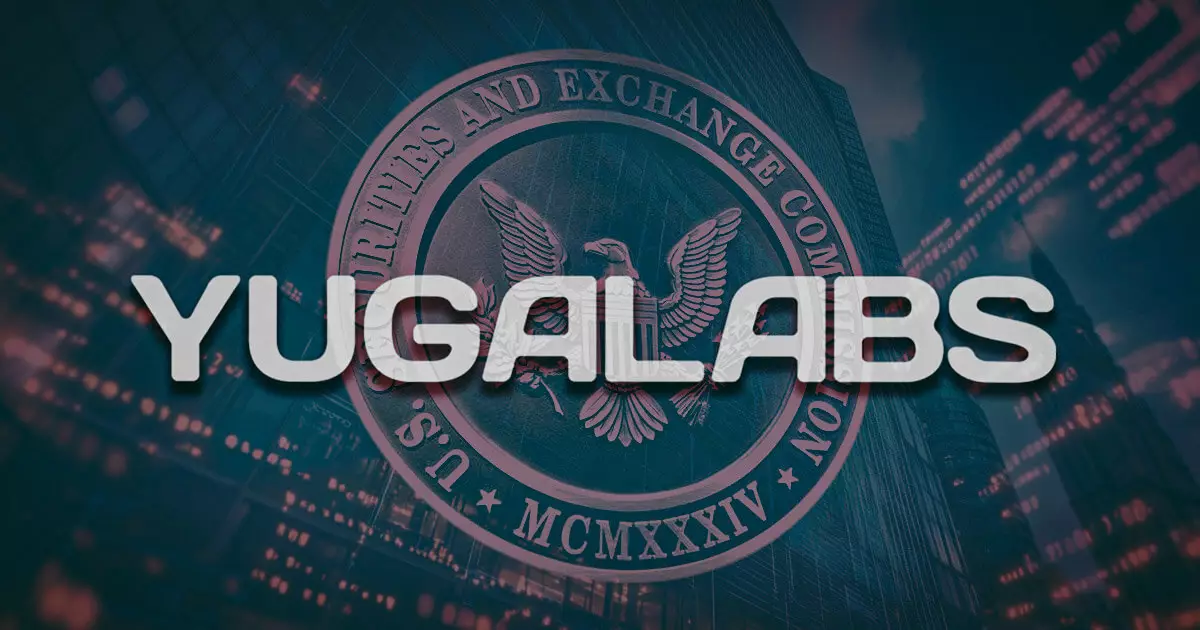The recent closure of the SEC investigation into Yuga Labs signifies a pivotal moment not just for the company behind the iconic Bored Ape Yacht Club but for the broader NFT landscape. After an exhaustive three-year probe that notably included scrutiny over whether specific NFTs could be classified as securities, the SEC decided against any enforcement actions. This decision underscores a growing realization that the regulation of digital assets, particularly NFTs, demands a nuanced understanding that goes beyond the outdated frameworks initially applied by regulatory bodies.
Yuga Labs has framed the SEC’s decision as a victory for creators and innovation in the NFT space. Their assertion that “NFTs are not securities” resonates deeply in the context of their ecosystem. The crux of the argument rests on the distinction between NFTs as vehicles for digital ownership and traditional securities that operate as investment contracts. By emerging unscathed from such intense scrutiny, Yuga Labs sets a precedent that could inspire future creators to innovate without the looming threat of regulatory backlash.
Moreover, the SEC’s investigation, which had begun in October 2022, highlighted the challenges that digital assets face due to a regulatory environment that has struggled to keep pace with technology. The agency’s inquiry into the sale of ApeCoin further illustrated its attempt to apply a rigid legal definition to an evolving marketplace. Yet, as the investigation culminated in the agency’s retreat, it raises questions about the effectiveness of existing regulatory frameworks in guiding blockchain technology and digital collections.
The SEC’s decision does not exist in a vacuum; it’s part of a larger trend of regulatory contraction in the crypto sector. Following a series of closures in ongoing investigations of other digital asset firms, including Robinhood and OpenSea, this shift could indicate a significant redirection under new leadership. Many in the industry view this as a thawing in what had been an adversarial relationship between regulators and digital innovators. However, skepticism remains regarding whether this marks a true departure from past enforcement intensity or merely a strategic repositioning.
What is particularly noteworthy is the insight this provides into the difficulties faced by regulators when defining digital assets. The Howey Test, traditionally a touchstone for securities classification, may increasingly appear outdated as digital ownership evolves and financial technologies reshape the investment landscape. As more entities argue against the regulatory classification of NFTs as securities, one can only speculate about how persistent this newfound regulatory leniency will prove.
This pivotal moment isn’t just a win for Yuga Labs; it suggests a broader recognition of the importance of digital ownership in the modern economy. The distinction between digital art, collectibles, and financial instruments must be scrutinized with a keen understanding of both technology and innovation. What remains to be seen is how this clarity—or lack thereof—will influence creators and investors as they navigate the murky waters of digital assets.
While the battle for proper digital asset classification continues, the trend toward a more favorable regulatory environment is undeniably a positive sign for the NFT community. If the SEC can recognize the distinct nature of NFTs amid a landscape increasingly crowded with financial instruments, it has implications that extend far beyond Yuga Labs.














